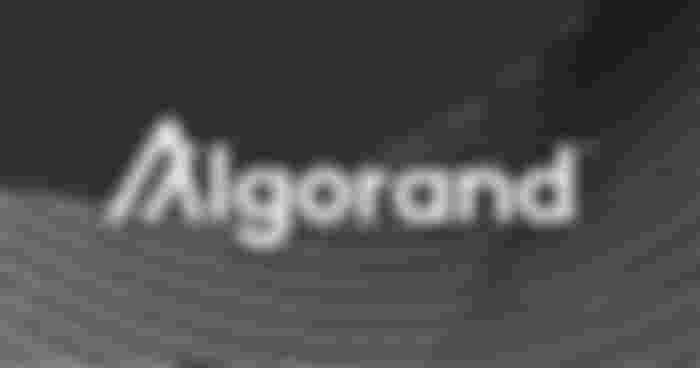What is Algorand and how does it work
Algorand is a decentralized and open-source blockchain, launched in June 2019.
The mind behind the project is Prof. Silvio Micali, Turing Prize, researcher, and teacher at the Massachusetts Institute of Technology (MIT).

Behind the entire project operates also the Algorand Foundation, an entity with different responsibilities. Algorand Foundation is responsible for keeping the ecosystem healthy, especially by managing the aspects of decentralized governance.
There is also a real company: Algorand Inc. It is in charge of managing the technical and operational aspects of the chain, the development of new features, and integration with other platforms and realities.
The main objective of this network is to solve the famous Blockchain Trilemma. To be perfect, a blockchain should be decentralized, scalable, and secure.

A few years ago, it was very difficult to find the correct balance between these three important characteristics. In older solutions, decentralization and scalability are sacrificed by the security component. From these considerations arises the trilemma, mentioned for the first time by Vitalik Buterin, creator of Ethereum. Algorand is specially designed to overcome the trilemma, projecting itself into the future.
Thanks to the innovative consensus algorithm, Algorand offers quick transactions capable of satisfying high demand.
At the same time, security is a cornerstone of the network and is not sacrificed in the name of performance. The use of the TEAL programming language, complex and less known by most, also contributes to it. Therefore, it is more difficult for an attacker to find any bugs or vulnerabilities.
Algorand structure, consensus algorithm, and scalability
Algorand is based on a native dual-layer structure. This means that the chain integrates both layer 1 and layer 2.
Layer 1 is responsible for processing primary operations, which are essential for the proper functioning of the network. However, these functions do not overload the chain.
Layer 2, is dedicated to everything that would burden the network, like normal transactions. Each operation is performed off-chain; so, the result is sent to layer 1, including certification to guarantee the correctness of what happened.
This native architecture allows Algorand to process transactions in seconds. In addition, gas fees are very low, even below 1 cent.
Underlying this technology is the possibility for any ALGO coin holder to validate a block. Stake limits or complex (and expensive) IT supports are not required. Anyone who has at least 1 ALGO has this opportunity.
The selection of the validator occurs randomly. The more ALGOs held, the greater the possibility of being chosen. The principle of proportionality is so maintained.
Not being able to predict who the next validator will be, is an addition to security. The consensus provides for several votes and ensures the regularity of transactions. As long as 2/3 of the total stakes are in safe hands, there is no chance that attackers will take over.
The structure of the chain contributes greatly to its efficiency. The Pure Proof-of-Stake consensus algorithm also guarantees the impossibility of proposing two blocks simultaneously in the same slot. So, the chain will never be forked.
Another cool feature is co-chains. Anyone can create additional chains in the Algorand world. These could be public or private, for different needs. Co-chains can interact with all the other chains opening a lot of possibilities.
$ALGO
$ALGO is the native coin of the Algorand network.
The maximum supply is set at 10 billion units. Of these, only 68% are currently in circulation.
The allocation of the ALGO crypto is as follows:
3 billion copies were released in the first 5 years of the network’s life. This figure includes the 25 million ALGOs involved in the initial sale.
2.5 billion coins destined for distribution over time to Relay Nodes.
2.5 billion, is addressed to the reserves of the Algorand Foundation and Algorand Inc.
1.75 billion ALGO was released over time as a reward to Participation Nodes. This figure may vary.
250 million ALGOs are reserved for grants for end users.
Let’s now see what are the cases of use of this cryptocurrency.
As we already know, the stake allows you to participate in the validation process. Since the probabilities are proportional to the ALGOs held, it will be difficult to be elected as validators with a small stake.
However, the stake produces rewards, so it could be an interesting opportunity for investors in this network.
ALGO is also the crypto required to pay the gas fees of the chain. Therefore, anyone wishing to use Algorand will necessarily have to buy a certain amount of this coin.
Finally, not a use case but still worth highlighting, ALGO can be a means of investing in the project. After all, if the network were to grow, an increase in the value of the related coin is desirable.
Buying ALGO is simple: it is available on many exchanges including Binance, Kraken, and Crypto.com.
Below is the graph of the ALGO Algorand value in the last year. The trend is quite negative, unfortunately for the entire crypto sector.

The Algorand ecosystem
Let’s start with the Defi and Algofi sectors, the main platform for deposited liquidity.
It is a lending protocol with a particular focus on stablecoins, among which we find USDC.
The capitals paid in by users are rather low compared to the other chains. However, we must consider that Algorand theoretically has ample room for growth.

Folks Finance is another Defi platform known in the world. Also dedicated to lending, it offers some innovative features such as multiple incentives, Lock & Earn, and a rewards aggregator.

Tinyman, the main decentralized exchange on-chain.

Although limited, the functionalities are what is expected from portals of this type: token and coin swaps, liquidity pools, and farms.
Defi is nothing more than a part of the Algorand ecosystem. Very interesting is AlgoFund, a launchpad designed to encourage the development and growth of new projects on the network.
Again, we are at an early stage, so the possibilities are quite limited. However, those who follow Algorand place a lot of trust in AlgoFund: it could play a leading role in the growth of the entire ecosystem.
Bleumi Payment is another reality that is worth following. It is a solution to allow payments in cryptocurrencies and fiat currencies on e-commerce sites. Because Algorand is a safe and fast chain, fundamental points in payments, this project could grow over time.
There is no shortage of platforms dedicated to NFTs. We point out AB2 Gallery and ZestBloom.
Pera Wallet is one of the best crypto wallets for this blockchain. Available for both mobile and computer apps, Pera Wallet also supports Ledger. It is a fast, easy wallet with clean and modern graphics.







